
Locking through safely
Locks usually consist of a watertight basin known as a lock chamber. They are designed to raise and lower boats by filling or emptying the lock chamber as required. The locks were built, along with a series of dams, to bypass rapids and waterfalls. In some locations, two or more locks are joined together to overcome greater changes in water levels.
Consult the following 3 steps to find out how to locking through safely on Quebec's canals and waterways.
-
Step 1: Approaching the canal
- Reduce your speed until you eliminate your wake.
- Keep the canal entrance clear so you don’t hinder the passage of boats exiting.
- Contact the lock/bridge operators by VHF radio or telephone to inform them of your position and your intention to be locked through, find out the wait time, and obtain locking-through instructions.
- Moor your vessel at the holding wharf. The blue line painted on mooring wharves marks the boundary for boats waiting for the next lockage. This zone is reserved strictly for them.
- Install your mooring lines and fenders on the wharf side inside the lock. You must have a minimum of two mooring lines of sufficient length and in good condition, one in front and one in back. Your floating fenders must be securely fastened, the correct size, and of sufficient quantity that neither your vessel nor the canal is damaged.
- If there is no wharf inside the lock (such as in the Chambly Canal), lock operators will inform you of the side on which to moor and will provide you mooring lines.
- Ensure that you have at least one person capable of doing the work required for each mooring line. Entrance to the canal will be refused if you are alone aboard the vessel.
- Watch the traffic lights:
- You may enter in the lock when the light turn green.
- Get ready on the flashing red light (do not enter the lock)
- The lock is not in service or a lock operation is in progress on the solid red (do not enter the lock)
- Vessels are locked through on a “first come, first served” basis. However, priority may be given to a specific vessel for logistical or safety reasons.
You are under the care of lock operators. Be polite to them. Verbal abuse will not be tolerated.
-
Step 2: Into the lock
- Once the navigation light is green, enter the lock following the instructions of the lock operators.
- Dock your watercraft in the area indicated by the lock operators, either along the wharf or beside another boat.
- Immobilize your craft by putting it in reverse.
- Switch off the engine only after the craft is securely moored. It is the responsibility of the pleasure craft operators to ensure that their vessels are properly docked and moored. Staff may provide assistance when you arrive, if they are available.
At the Saint-Ours, Lachine, Sainte-Anne-de-Bellevue and Carillon canals, ensure that your craft is securely tied to the wharf. Tie up the back first by taking up all the slack, then tie up the front.
At the Chambly canal, do not attach mooring lines to your cleats. Loop the line around the cleat, making sure to lighten or loosen it during the lockage process.
Once your craft is well-moored, follow these instructions:
- No open flasmes on board
- Turn off the engine
- No smoking/vaping
- Bilge blower on
- Turn off your radar
- Reduce the volume of your radio during the lockage
- Be ready to pay or show your lockage permit to staff
During the lockage, each mooring line must be tended by a crew member. At the Chambly canal, use a boat hook to distance yourself from the lock wall. Do not use your feet or your hands.
When you navigate through the Chambly and the Lachine canals, always report your arrival at locks and bridges. Keep staff abreast of your navigation plans.
-
Step 3: Exiting the lock
- Wait until the lock gates are fully open and lock staff give you the signal to start the engine and unhook your moorings.
- Exit the lock slowly, in the order given by the lock operators. If boats are side by side in the lock, they must exit width-wise, from the wall to the wharf.
- Respect the 10 km/h (6 mph, 5.5 knots) speed limit and watch your wake until reaching the lateral buoys at the canal channel exit.
View the steps to lockage through safely
Volume
Current position:00:00:00
Total time:00:01:46
Locking through safely
Transcript
Parks Canada logo
Music start. Aerial view of the Sainte-Anne-de-Bellevue Canal
Text on screen : Locking through safely
Three boaters on board a ship
Close-up on the hands of the captain holding the wheel
Text on screen: 1st Step: Approaching the canal
Animation of a boat approaching a lock
Close-up of the captain maneuvering the boat
Close-up of the captain's hand slowing down the boat
Text on screen: Reduce your speed and turn off your radar.
The sailor is in front of the boat getting the moorings ready.
Text on screen: Install 2 fenders and 2 mooring lines on the wharf side
The sailor takes down the fenders
The captain takes the VHF radio in his hand
Text on screen: Contact the lock operators by VHF radio on channel 68
Parks Canada lock operator communicates with the captain on her radio next to the lock
Shot of the waiting wharf indicated by a blue line on the Sainte-Anne-de-Bellevue Canal
Text on screen: Moor your vessel at the holding wharf delineated by a blue line
The boat approachs the waiting wharf
The sailor is watching the back of the boat closely during the manœuvre.
The sailor untie the ropes of the boat
Text on screen: Follow the lock operators’ instructions.
Parks Canada lock operator is walking towards the control unit of the lock
close-up on the lock operator's hands controlling the panel
The lock's doors slowly open, showing the boat waiting on the other side
The trafic light of the lock goes from red to green
Text on screen: 2nd step: Into the lock
Animation of a boat entering a lock
View from the front of the boat slowly entering the lock
The lock operator is giving directiong to the captain from the banks
The sailor moors the boat to the lock's wharf
The sailor gives a thumbs up to the captain to let him know that the boat is correctly attached
Close-up view of the captain's hand turning the engine off with the key
Text on screen: Once moored: Switch off the engine
Close-up of the captain's hand pushing a button
Text on screen: Once moored: Make sure the bilge blower is working
Close-up of a hand turning down the volume of the radio
Text on screen: Once moored: Lower the volume on your radio
Close-up of the boat's GPS g
Text on screen : Once moored: No smoking or vaping is allowed.
The lock operator gets down on the wharf with the electronic pad for the payment
Close-up of the tablet showing the current transaction
The sailor smiles and does a contactless payment with his card
The exit lock's doors slowly open
Text on screen: Wait until the lock gates are fully open and lock staff give you the signal
Close-up on the boat engine restarting
Text on screen: to start the engine and unhook your moorings.
The sailor unhook the moorings of the boat.
The boat moves towards the exit of the lock while the captain waves goodbye to Parks Canada staff
Text on screen: 3rd step: Exiting the lock
Animation of a boat exiting a lock
The boat sails towards the exit of the Sainte-Anne-de-Bellevue Canal
Text on screen: 10 km/m Respect the speed limit
Boaters in the vessel
Close-up on the waves
Text on screen: Make sure your wake does not exceed the lateral buoys at the channel exit.
Aerial view of the boat sailing the canal
Boaters laughing on board the boat
The sailor and captain are preparing to moor to boat to the mooring wharf of the canal
Text on screen : If you are mooring overnight, inform the lock staff immediately so they can show you where to moor. Plan your visit and consult all canals technical data and guidelines on our website. For more information, visit our website. PC.GC.CA/CANALS
Boaters are sitting at a picnic table on the canal's bank and raise their glasses, smiling
Close-up of the woman laughing
Close-up of the man smiling
Sequence shot. Aerial view of the three with the canal behind them
Text on screen: PC.GC.CA/CANALS. Kilometers of adventure await
Music stops. Government of Canada logo
Technical data
Sainte-Anne-de-Bellevue Canal
- Draught: 2.74 m (9 feet)
- Overhead clearance: between 10.67 m (35 feet) and 12.80 m (42 feet)
- Lock dimensions: 54.86 m (180 feet) x 11.89 m (39 feet)
- Transit time: 30 minutes
Important information
Draft and clearance may vary, please contact the lockmaster by phone at 514-457-5546 or by VHF channel 68 during operating hours.
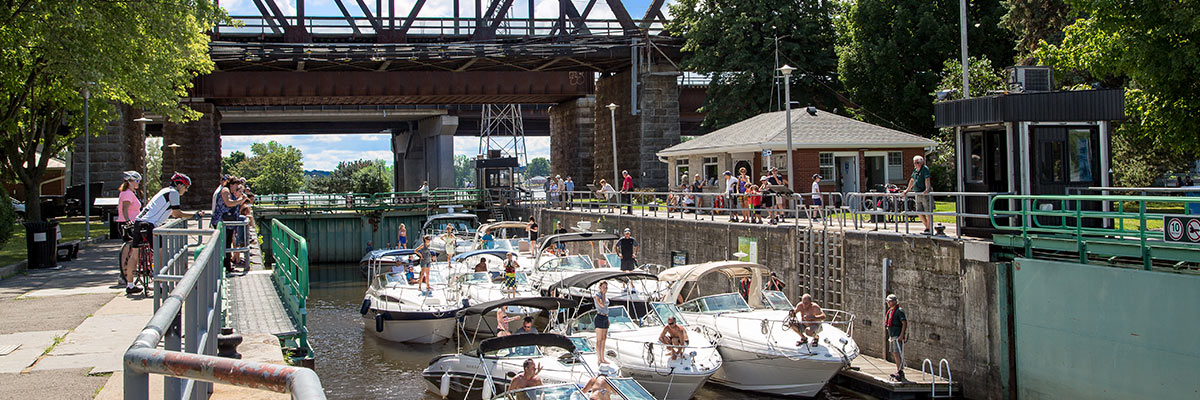
Lachine Canal
- Draught: 2 m (6 feet, 6 inches)
- Overhead clearance: 2.45 m (8 feet)
- Smallest lock dimensions: 50.29 m (165 feet) x 11 m (36 feet)
- Transit time: 3 to 5 hours
- Length of canal: 14 km (7.56 NM)
Important information
- Draft and clearance may vary, please contact the lockmaster by phone at lock no. 5 (Lachine): 514-595-6594 and at lock no. 1 (Old Port): 514-496-1536 or by VHF channel 68 during operating hours.
- Due to a problem with one of the gates, the maximum width of the boats authorized in locks Nos. 1 and 2 is 15 feet.
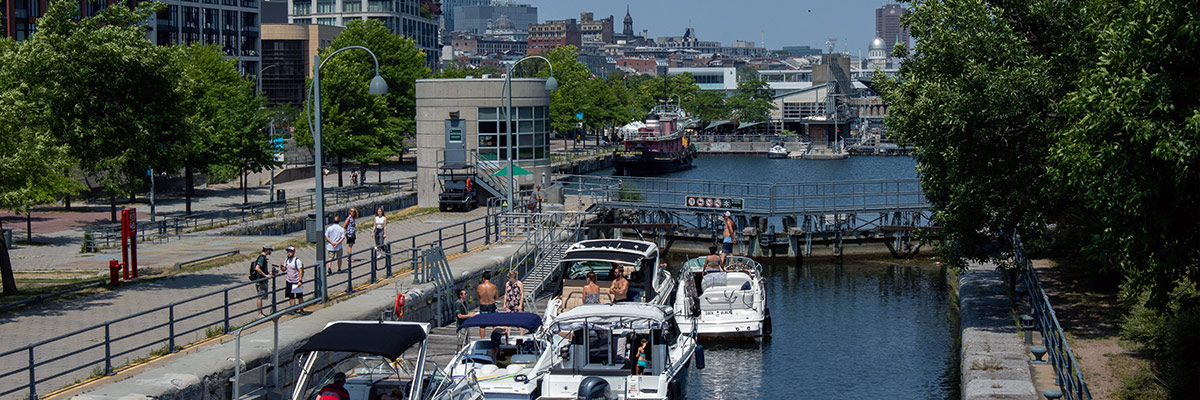
Carillon Canal
- Draught: 2.74 m (9 feet)
- Overhead clearance: 12.8 m (42 feet)
- Lock dimensions: 54.86 m (180 feet) x 11.89 m (39 feet)
- Transit time: 1 hour
Important information
- Draft and clearance may vary, please contact the lockmaster by phone at 450-537-3534 or by VHF-canal 68 during operating hours.
- Submerged logs could drift and pose a danger to boats. Be carefull!
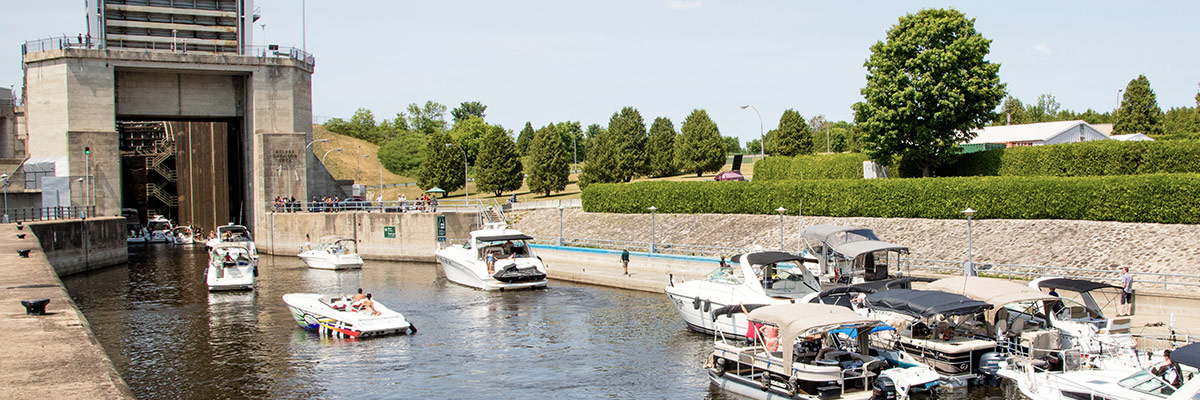
Chambly Canal
- Draught: 2 m (6.6 feet)
- Overhead clearance: 8.84 m (29 feet)
- Smallest lock dimensions: 33.52 m (110 feet) x 6.7 m (22 feet)
- Transit time: 3 to 5 hours
- Length of canal: 19 km (10.29 NM)
Important information
- Draft and clearance may vary, please contact the lockmaster by phone at 450-658-4381 (locks no. 1-2-3) and 450-348-3392 (lock no. 9) or by VHF-canal 68 during operating hours.
- Submerged logs could drift and pose a danger to boats. Be carefull!
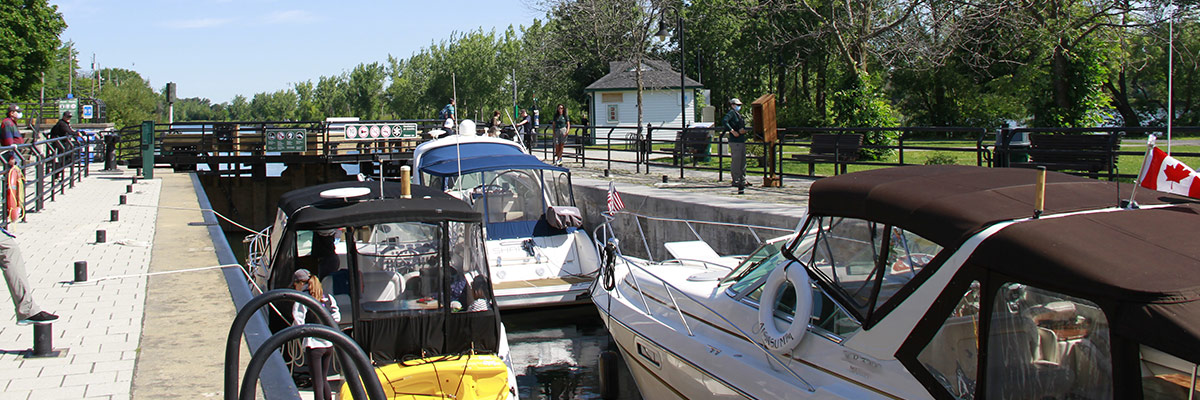
Saint-Ours Canal
- Draught: 3.66 m (12 ft.)
- Clearance: 8.84 m (29 ft.)
- Lock dimensions: 97.54 m (320 ft.) x 11.89 m (39 ft.)
- Transit time: 30 minutes
Important information
- Draft and clearance may vary, please contact the lockmaster by phone at 450-755-8140 or by VHF-canal 68 during operating hours.
- Because of fixed bridges and overhead power lines, vessels with masts exceeding 8 meters must unmast at Saint-Paul-de-l'Île-aux-Noix located upstream of the Saint-Ours Canal or at Sorel located downstream of the Saint-Ours Canal.
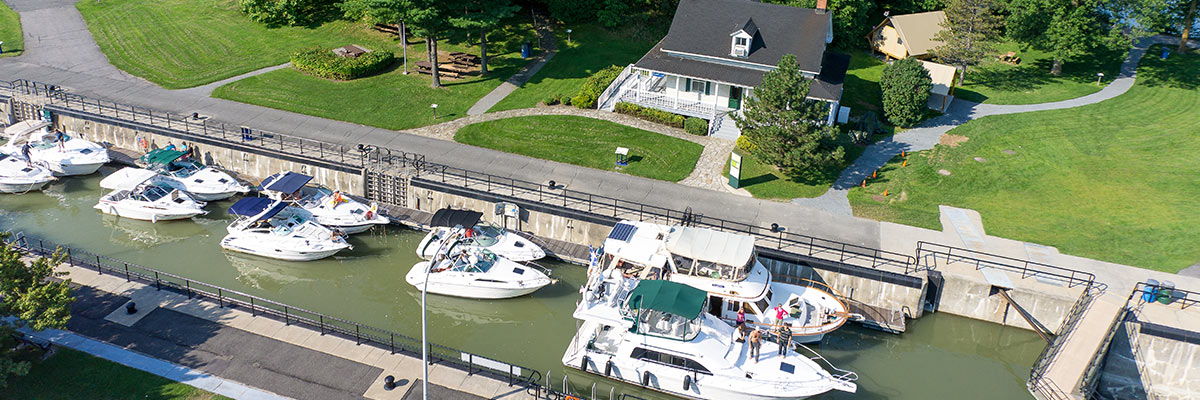
Lockage and mooring permits
To navigate the historic canals, get through the locks or moor overnight, you need a lockage and/or mooring permit.
Get your lockage permit online. You can also buy your permit at the lock station.
Night mooring
When you dock at a wall or wharf adjacent to a lock between 8 p.m. and 8 a.m., you must pay for mooring at the lock station or while travelling through the lock. Double-moored vessels must also pay.
The maximum mooring period is 48 hours. You must wait at least 24 hours before returning to moor in the same lock. Note that this regulation is subject to change.
- All vessels must obtain a locking and mooring permit, regardless of their size, with the minimum rate applying to 12-foot vessels.
- To be valid, seasonal locking and mooring permits must be installed in full view on the front side of the lower edge of the vessel’s windshield.
- Keep your receipts in a safe place, as proof of purchase.
Visit the Passes and permits page for more information on permits and rates.
Locking through safely - Historic canals in Ontario
- Date modified :